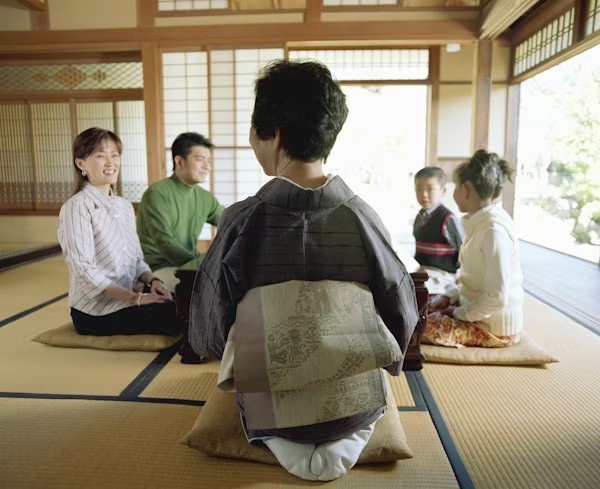Language is never just about words—it reflects worldviews, cultural values, and unspoken rules of interaction. In Japanese, one such word that carries layered significance is “Jyokyo” (状況), commonly translated as situation or circumstances. While the literal definition may appear simple, its cultural implications in communication, social dynamics, and even business etiquette reveal far deeper insights into Japanese thought and behavior.
This article explores the meaning of Jyokyo, its cultural nuances, and its role in shaping Japanese communication—offering a window into how context, relationships, and subtlety define daily interactions in Japan.
The Meaning of “Jyokyo”
At its core, Jyokyo (状況) refers to the state of affairs, situation, or set of circumstances at a given time. It is often used in both everyday conversation and formal contexts. For example:
-
今の状況を教えてください。 (Ima no jyokyo o oshiete kudasai.)
→ “Please tell me the current situation.” -
経済状況が厳しい。 (Keizai jyokyo ga kibishii.)
→ “The economic situation is tough.”
Unlike English words like situation or condition, “Jyokyo” tends to emphasize the contextual landscape surrounding an event or decision, not just the event itself.
Cultural Nuances of Jyokyo
In Japanese communication, context is everything. The word “Jyokyo” reflects this cultural tendency in several ways:
1. Emphasis on Situational Awareness
Japanese culture values the ability to “read the air” (kuuki o yomu), meaning to sense the mood, expectations, and unspoken rules in a given setting. Referring to the “Jyokyo” is a way of acknowledging these unspoken factors that shape behavior.
2. Indirectness in Speech
Rather than stating opinions directly, Japanese speakers often frame their thoughts in terms of the situation. For example:
-
Instead of saying, “I can’t attend,” one might say, “Jyokyo ga yoku nai node…” (“Because the situation isn’t good…”).
This indirectness softens refusal and maintains harmony.
3. Flexibility and Adaptation
By focusing on the “Jyokyo,” responsibility often shifts from individuals to circumstances. This reflects a cultural preference for harmony and adaptability rather than confrontation.
Jyokyo in Japanese Communication
The concept of “Jyokyo” plays a vital role in how Japanese people navigate social, professional, and personal interactions.
1. Everyday Life
In casual conversation, people frequently refer to “Jyokyo” when explaining decisions, plans, or changes. For example, declining an outing with friends by citing one’s “current Jyokyo” allows for refusal without explicit rejection.
2. Business Settings
In corporate Japan, “Jyokyo” is central to decision-making and reporting. Managers often ask for updates on the genba no jyokyo (現場の状況 – on-site situation) before making choices. The word conveys both respect for factual detail and acknowledgment of context.
3. Crisis Communication
In times of natural disasters or emergencies—a reality Japan is well-acquainted with—the word “Jyokyo” is widely used in news reports, government statements, and community updates. It emphasizes the dynamic, evolving nature of conditions on the ground.
4. Politeness and Hierarchy
When speaking to superiors, referencing the “Jyokyo” rather than one’s personal preference can show humility and respect. This indirect framing helps preserve hierarchy while ensuring decisions are seen as situational, not individualistic.
Comparing “Jyokyo” to Related Words
Japanese has several words that appear similar but carry distinct nuances:
-
Jōtai (状態) → Refers more to a state or condition, often static (e.g., health condition).
-
Baai (場合) → Means case or instance, used for hypothetical or conditional situations.
-
Jyokyo (状況) → Emphasizes dynamic circumstances, often external and evolving.
Understanding these differences helps learners of Japanese grasp the subtlety embedded in everyday communication.
Jyokyo in Literature and Media
Beyond daily use, “Jyokyo” frequently appears in Japanese literature, journalism, and pop culture. Writers use it to frame narratives where characters’ fates hinge not just on personal will but on shifting circumstances. This reflects a broader worldview: life is not merely about individual action, but about navigating ever-changing contexts.
For example:
-
News headlines like “現地の状況が変化している” (“The situation on the ground is changing”) highlight its journalistic use.
-
In novels, characters often reflect on their “Jyokyo” as a way of justifying choices or exploring inner conflict.
Why Understanding “Jyokyo” Matters
For non-native speakers engaging with Japanese culture—whether as students, travelers, or professionals—understanding “Jyokyo” offers key insights:
-
Improves communication → Recognizing when someone frames things in terms of circumstances helps you interpret indirect speech.
-
Reveals cultural values → It underscores Japan’s emphasis on harmony, context, and flexibility.
-
Enhances relationships → Using “Jyokyo” appropriately can make your Japanese sound more natural and culturally sensitive.
Conclusion
“Jyokyo” may seem like a simple word for “situation,” but it is much more than that. It embodies context, subtlety, and adaptability, reflecting core values of Japanese society and communication. Whether used in casual conversation, business negotiations, or crisis reporting, it reminds us that actions and words are always shaped by circumstances.

